- Images
- Blog
- Tools
- Questar
- The Questar telescope
- Questar resource links
- Search for Questar info
- 172mm Focal Reducer
- Afocal adapter for point and shoot camera
- Camera adapter lengths
- Camera adapter threading
- Camera connection
- Camera focusing
- Custom counterweight
- Drift Alignment Joy
- Finder Eyepiece Compatibility
- The Questar Moon 1981
- Questar Powerguide II Battery Life
- Questar Zone, How to Service Videos
- Red Dot finder mount for Questar
- Questar Viewing Table
- Wedge mounts
- White light solar filters comparison
- How to
- Get started in astronomy
- Astro RaspberryPi Camera and kin, the ASIAir and StellarMate
- Blind Smart-phone Equatorial Wedge or GEM Polar Alignment
- Camera phone adapter
- Celestron FirstScope with equatorial tripod mount
- Coat Pocket Astrophotography
- Day-lapse Images of Earthshine on the Crescent Moon
- Dobsonian Carrying Case
- DSO Astrophotography without a Telescope
- DSO imaging without a star tracker
- Estimating image resolution
- Lunar Eclipse Photography
- Moon photography - a dozen ways to shoot the Moon
- Meteor shower photography & planning
- Matching image sensor size to telescope resolution
- Narrow band imaging with color cameras
- Planetary Image Workflow
- Print and Display Astrophotography
- Observing
- Events
- More
- About
- Contact
Narrow band imaging with color cameras
Astrophotographers have good options for images under city lights with one shot color (OSC) cameras and narrow band filters. The right filter can let you image colorful emission nebulae under an Austin full moon and produce images that look like they were taken in the dark of the Big Bend.
Planetary imaging, where astronomical seeing is everything, is impaired little by urban light domes. Galaxies and reflection nebulae require dark skies. How can other deep sky objects (DSO) be imaged under city skies? I decided to try narrow band imaging with my small telescope rig built around a William Optics RedCat 250/51mm telescope and ZWO ASI533 camera.

Narrow band filters for emission nebulae
Deep sky astrophotographers have been making amazing images of emission nebulae under city skies for years using monochrome cameras and narrow band (NB) filters. Emission nebulae glow strongly in only a few wavelengths including Hydrogen alpha, Oxygen III, and Sulfur II. By using narrow band filters only a few angstroms wide, light pollution is mostly eliminated. Capturing these narrow band images requires a special kit. Monochrome cameras, narrow band filters, LRGB filters, electronic filter wheel, and electronic focuser. The cost and complexity of this additional equipment discouraged me and I’m sure many others.
Sky glow adds noise to images
Sky glow background can be reduced in processing by gradient reduction. This subtracts the average background light from the image. Unfortunately sky glow is noisy and adds noise to images, obscuring faint detail. The best way to reduce this noise is to filter out the sources of the noise during image acquisition.
Many OSC astrophotographers use broadband filters for light pollution reduction. These keep approximately natural colors by passing most light rejecting only the wavelengths with the worst light pollution. These include emissions of mercury vapor and sodium street lights. Broadband filters increase contrast in images taken under city skies. They are often called city light suppression (CLS), light pollution reduction (LPR) or skyglow filters.
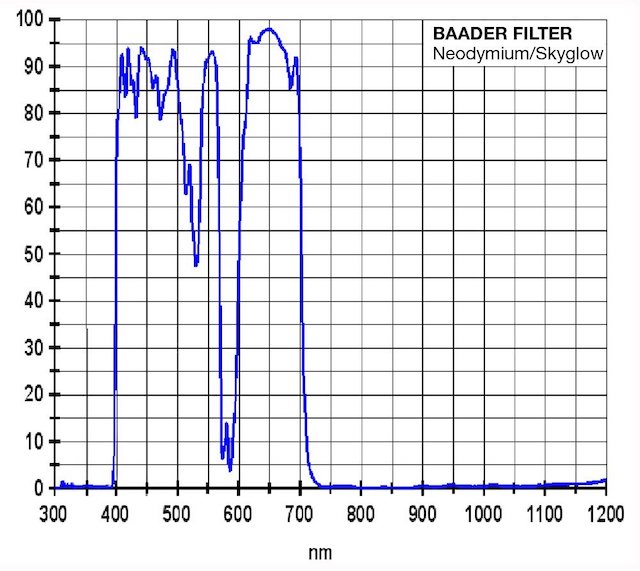
These filters are limited in what they can accomplish. Most of urban light pollution is now broad band. Sky glow filters with narrow rejection bands leave most broadband noise alone. With emission nebulae we can flip the script. These nebulae emit most of their brightness in only a few specific wavelengths. If we filter out nearly all of the light except for narrow bands of astronomical interest, we can do much better.
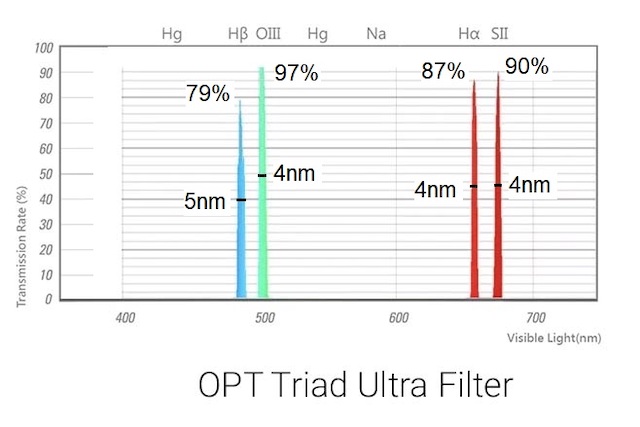
A filter with a total of 17 nm of band pass in the 320 nm visual spectrum will eliminate 95% of broad band sky glow and its associated noise. A 20 X reduction in sky glow is the equivalent of going from a Bortle 7 to a Bortle 1 sky. If your target emits almost all of its light in the narrow pass bands, its brightness is not reduced. Emission nebulae are the winners! Galaxies not so much...
Cooled monochrome astronomical cameras with individual narrow band filters, electronic filter wheel, and focuser are the gold standard for narrow band DSO astrophotography. However, new filters with multiple narrow pass bands have changed the game for users of astronomical OSC cameras. An entry level narrow multi band filter can pass both the prominent Hydrogen alpha and Oxygen III bands from emission nebulae. The Ha is captured by the red Bayer array pixels and O III by the blue and green. Long exposures are required just as they are with a monochrome camera and NB filters. OSC cameras are more efficient with NB when they capture multiple bands at the same time.
NB images need long exposures
Working with only a small part of the spectrum means that long exposures are needed even under dark skies. A guided mount is the easiest way to achieve long exposures.
Finding targets in bright sky glow is hard. Most deep sky targets are invisible to human eyes. Few stars are visible for star hopping. A GoTo mount makes finding and framing targets much easier under an urban light dome.
Filter options
Because emission lines are at individual wavelengths, it seems that the narrower the filter pass bands the better. There are practical limits to this with wide field of view lenses. Light ray paths that diverge from perpendicular cause the effective filter bandpass to shift, attenuating the correct wavelength. This is worse near the edges of the image with wide field of view lenses.
Multi-band filters with two (H a and O III) to four (H alpha, O III, H beta, S II) narrow pass bands are available. A OSC camera filters these further into the 3 RGB color channels. Narrow pass bands and additional pass bands add cost; NB filter prices range from $200 to $1000+. Additional wavelength pass bands and narrower pass bands add to the cost. In my kit I used the Optolong L-eNhance filter with two pass bands.
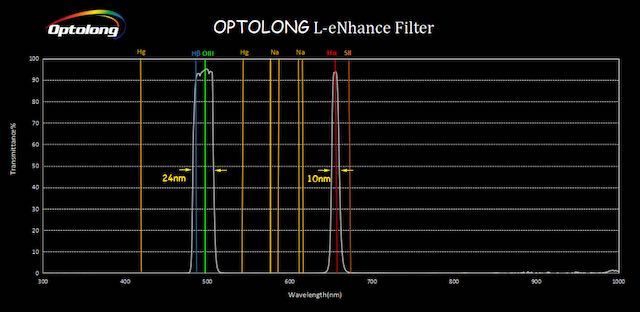
Color Palettes
Narrow band images do not look natural unprocessed. Colors can be reassigned and rebalanced for natural or more pleasing looks. Individual NB images from a monochrome camera give the most flexibility, but Bayer filtered RGB channels from a multi NB filter and OSC camera have adequate flexibility.
The two most used color palates are (in RGB order) the Hubble SHO and the HOO (where S II data is not available) palettes. Color corrected images from even a two band H alpha and O III filter can look surprisingly natural in an HOO palette.
S II and H alpha wavelengths are both filtered into the red pixels in a one shot color camera. When these are captured at the same time with a multi band filter, they cannot be separated in processing. The additional signal can add detail to the image. Processing that data to a true Hubble SHO image isn't possible with a single multi band filter and one shot color camera.
Additional equipment and costs
It is possible to do NB imaging with a DSLR with IR modifications. A cooled astro camera will reduce noise significantly in the hot Texas climate. I use the ZWO ASI533 MC, a cooled OSC astro camera with a moderate size 16mm sensor diagonal and 10 MP resolution. It has very low thermal and read noise. With my 250 mm focal length scope, it has a great field of view (3.6 deg diagonal) for many emission nebulae. I use an ASIAIR Pro wireless controller for the camera and mount.
With a OSC camera, a filter drawer is an easy substitute for an electronic filter wheel. Usually only one filter is used in an imaging session so there is no need for an EFW to change filters and adjust focus with every filter change. If you already have an OSC camera a filter that you can fit to it is all that is required. Dual band NB filters start at around $200.
I also use an IR/UV cut filter, or a city light suppression filter for full color images. I decided to add a convenience filter drawer, making my total cost less than $400.
For traditional monochrome NB imaging costs, excluding the monochrome camera, expect to pay $1600+ for the required filters, electronic filter wheel, and electronic auto focuser.
There are lots of choices of cameras, filters, and needed accessories that can let you take NB images. Prices range from moderate to astronomical. I’m happy with my choices but have no guarantee that they are the best for you. Let’s look at results with the moderately priced additions I made to my OSC rig.
Image results
Does a OSC cooled astro camera with a dual NB filter give good results under a Bortle 7 sky?
These images are from a 250/51 mm telescope, with total exposure times from 2 to 4 hours, with a full or near full moon in the sky, from my driveway in NW Austin. Take a look and decide if OSC multi NB astrophotography might be worth a try:
All sample images were processed with PixInsight, StarEXterminator, Topaz DeNoise, and Photoshop.
Content created: 2021-09-25
Comments
![]() Submit comments or questions about this page.
Submit comments or questions about this page.
By submitting a comment, you agree that: it may be included here in whole or part, attributed to you, and its content is subject to the site wide Creative Commons licensing.

How to
Starter telescopes for beginners
Getting started in astrophotography?
Choose & setup a camera for astrophotography
Astro RaspberryPi Camera and kin, the ASIAir and StellarMate
Blind Smart-phone Equatorial Wedge or GEM Polar Alignment
Celestron FirstScope with equatorial tripod mount
Day-lapse Images of Earthshine on the Crescent Moon
DSO Astrophotography without a Telescope
DSO imaging without a star tracker
Overview & equipment for lunar eclipse photography
Framing and tracking a lunar eclipse
Moon photography - a dozen ways to shoot the Moon
Meteor shower photography & planning
Matching image sensor size to telescope resolution
Narrow band imaging with color cameras
Print and Display Astrophotography
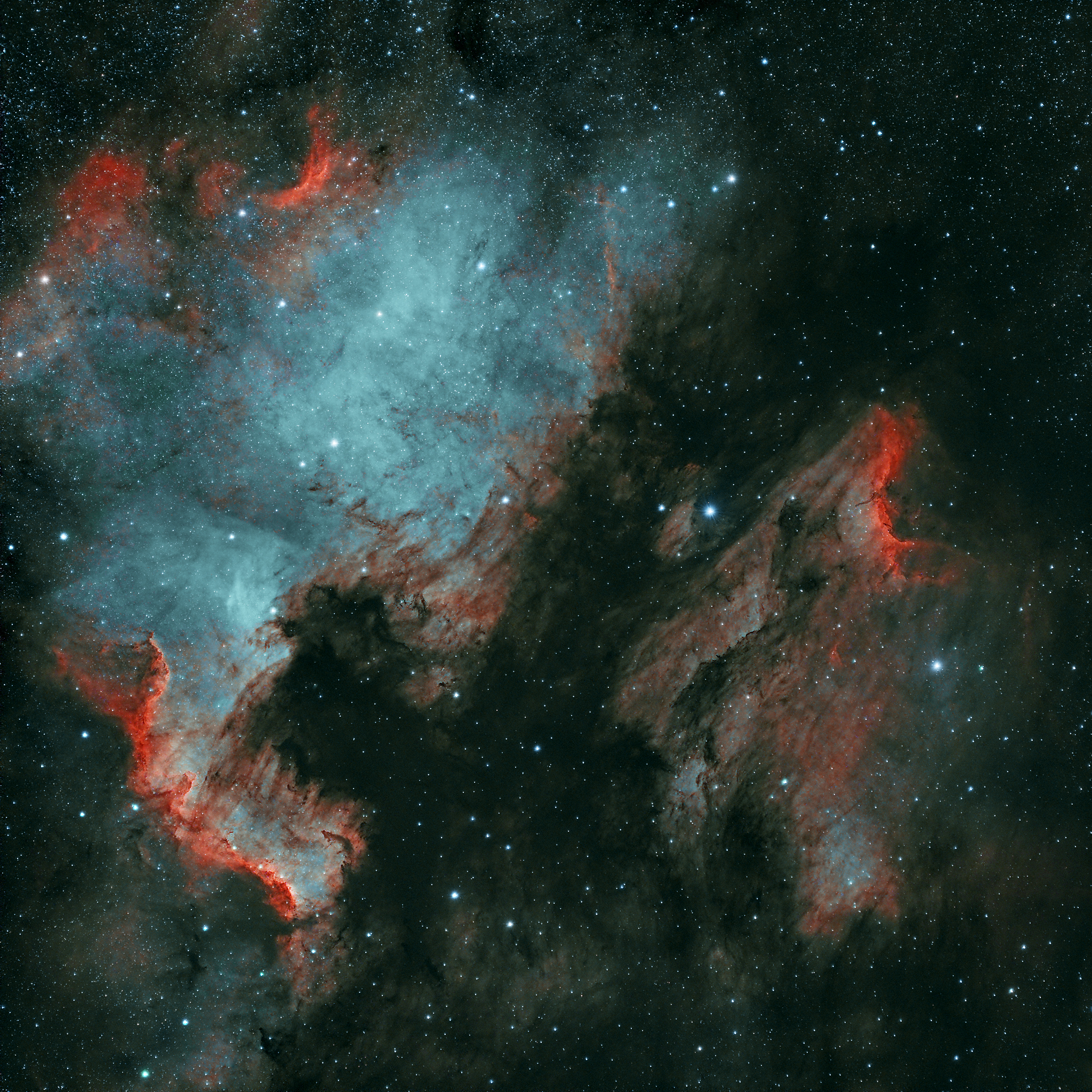
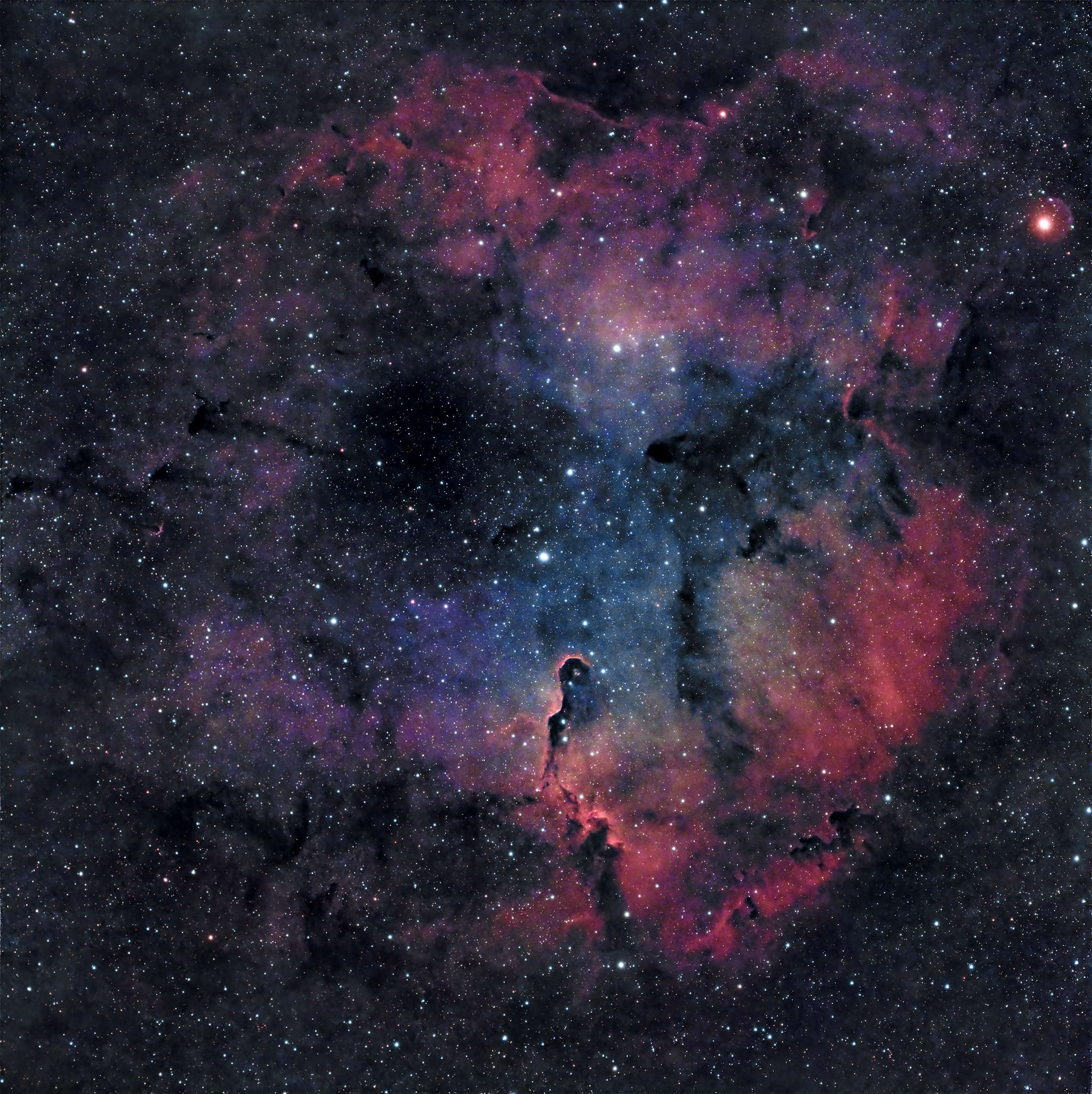


 Get started in astronomy
Get started in astronomy